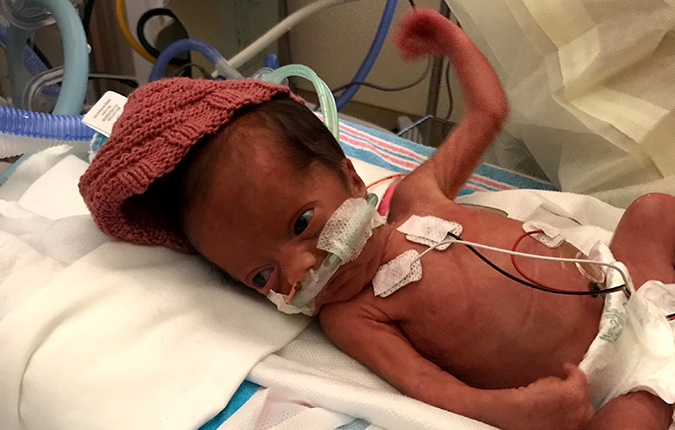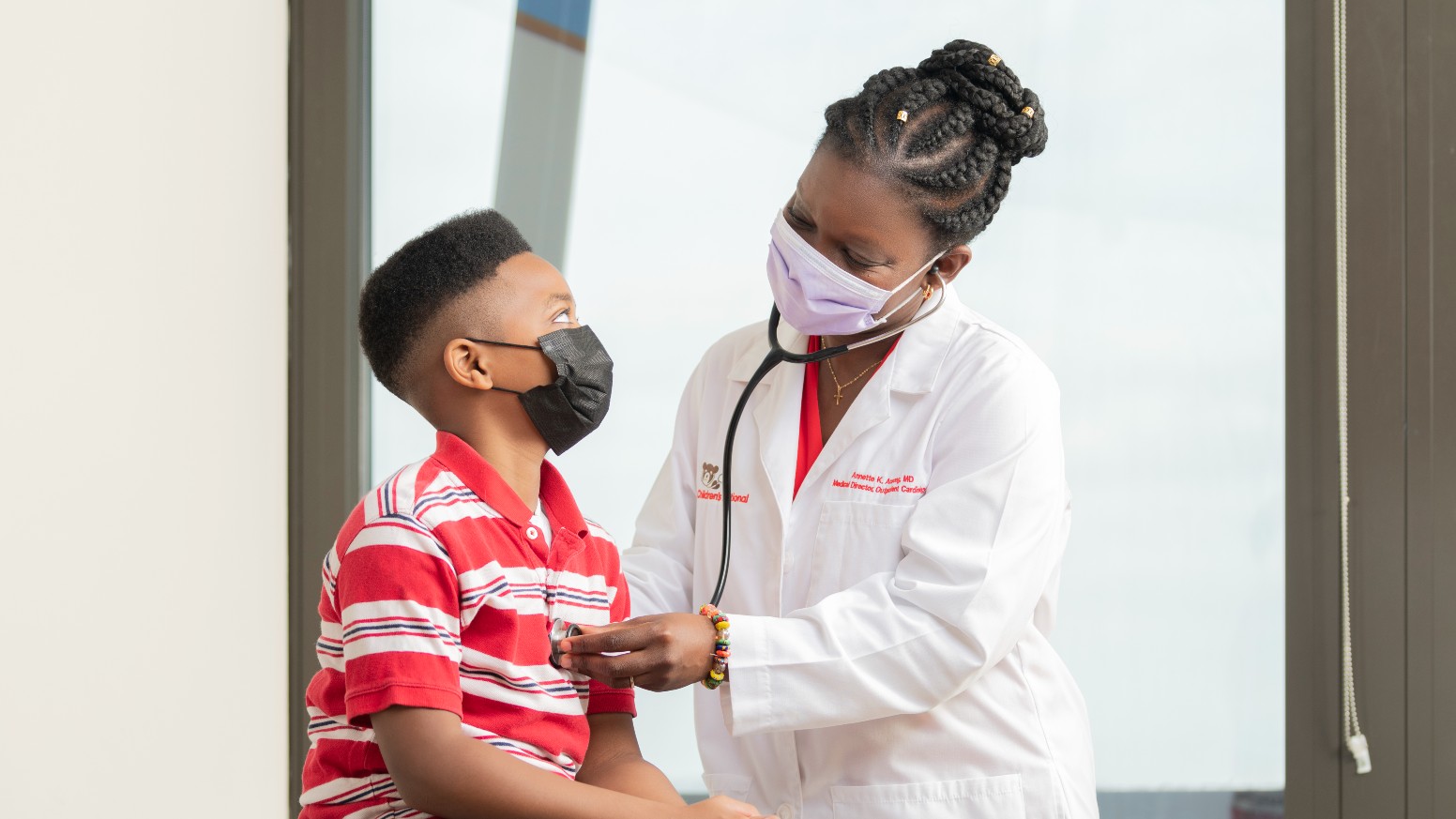Condition
Pediatric Pulmonary Atresia
What is pulmonary atresia?

Pulmonary atresia (PA) is a heart defect that occurs due to abnormal development of the prenatal heart during the first eight weeks of pregnancy.
Pulmonary atresia means that there is an abnormal development of the pulmonary valve. The pulmonary valve is found between the right ventricle and the pulmonary artery, which is the large artery that goes to the lungs. It has three leaflets that function like a one-way door, allowing blood to flow forward into the pulmonary artery and to the lungs, but not backward into the right ventricle.
With pulmonary atresia, problems with the valve prevent the leaflets from opening; therefore, blood cannot flow forward from the right ventricle to the lungs.

Often, if blood is blocked from exiting the pulmonary valve, there is a second opening in the ventricular wall. The ventricular wall is the wall of heart muscle that separates the left ventricle from the right ventricle of the heart. This opening is called a ventricular septal defect (VSD).
There may also be a second opening, or "hole" between the two upper chambers of the heart, the left and right atria. This defect is called an atrial septal defect (ASD). These holes allow blood in the obstructed right ventricle a way out of the heart. The blood then ultimately crosses to the left side of the heart and is pumped out to the body.
This situation cannot support life, because the blood never makes it to the lungs to become oxygenated, and oxygen-poor (blue) blood cannot meet the body's demands.
Sometimes, newborns will rely on a connection between the aorta and the pulmonary artery, called the ductus arteriosus. That allows some of the oxygen-poor (blue) blood to bypass the blocked right ventricle and get to the lungs. This ductus arteriosus is persistent from normal prenatal circulation, and unfortunately, this ductus arteriosus normally closes within a few hours or days after birth.
Because of the low amount of oxygen provided to the body, pulmonary atresia is a heart problem that can ultimately result in cyanosis, or a blue color to the skin from lack of oxygen.
Frequently Asked Questions
What causes pulmonary atresia in children?
What are the symptoms of pulmonary atresia in children?
How is pulmonary atresia diagnosed in children?
What is the treatment for pulmonary atresia in children?
What postoperative care can I expect for my child?
How can I care for my child at home following a pulmonary atresia surgical repair?
What is the long-term outlook for children after pulmonary atresia surgical repair?

Cardiac Catheterization at Children's National Hospital
The pediatric heart experts at Children's National Hospital treat children with the most complex heart, blood vessel and valve conditions. Our Cardiac Catheterization program has one of the highest success rates for cardiac catheterization procedures. Learn more about Cardiac Catheterization.

Providers Who Treat Pulmonary Atresia
 Aasha's Rare Gift Will Help Other Babies Grow up Healthy
Aasha's Rare Gift Will Help Other Babies Grow up HealthyTesting the descrption field
Departments that Treat Pulmonary Atresia
Prenatal Cardiology Program
Children diagnosed with heart conditions before they are born receive comprehensive, expert care from our fetal cardiology specialists. Learn more about our Prenatal Cardiology Program.












